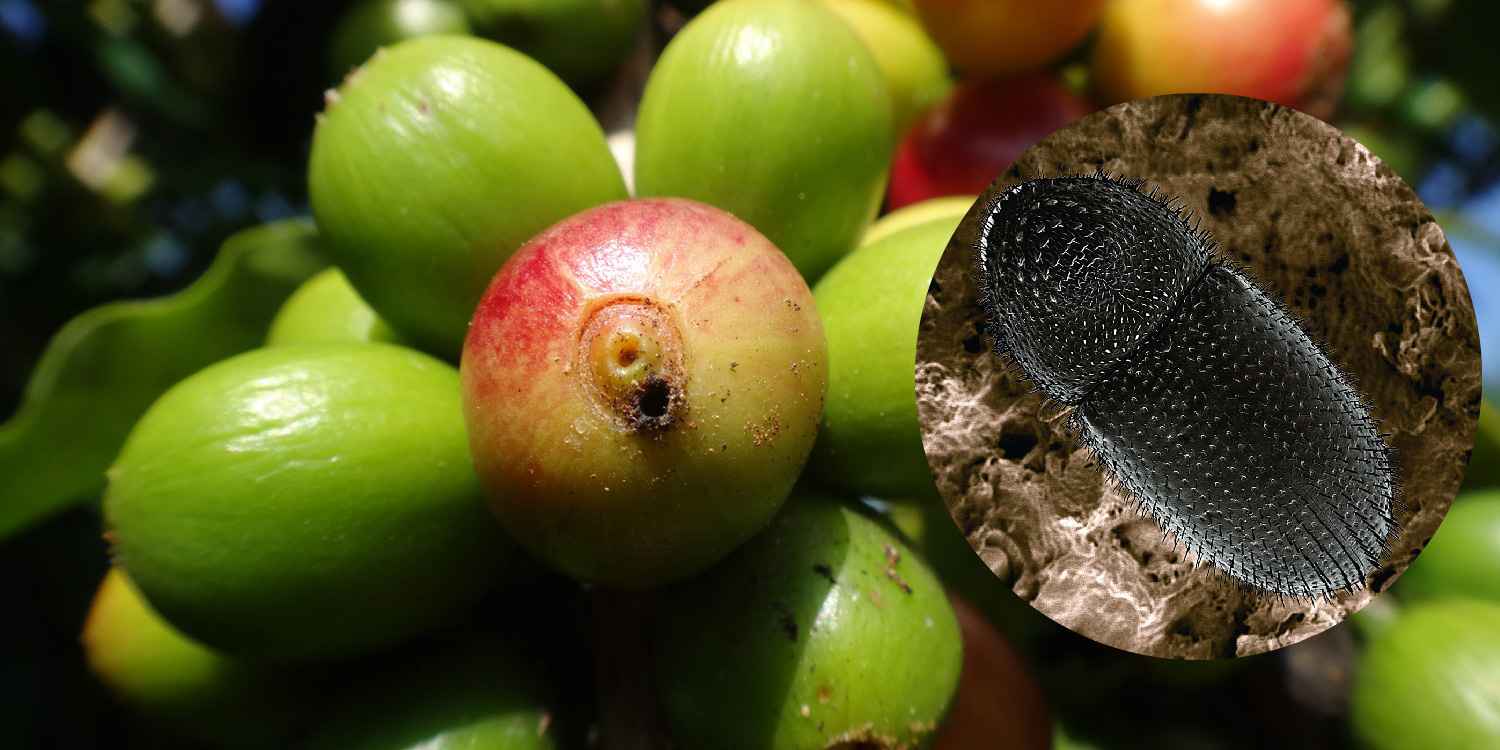Share your coffee stories with us by writing to info@comunicaffe.com.
BOGOTÁ, Colombia – Always at the forefront in the global industry, the Colombian Coffee Growers Federation (FNC), through the National Coffee Research Center (Cenicafé), made public for the first time the complete sequence of the genome (genetic library) of the coffee berry borer (CBB, Hypothenemus hampei). An interdisciplinary team of scientists from Cenicafé, in collaboration with researchers from Purdue University, USA, published this important advance in the latest issue of Scientific Reports, an online journal that is part of the prestigious Nature publishing house.
The published work is peer reviewed, supporting its scientific rigor, and open to access, which will help better study and understand this insect native to Africa, present in Colombia since 1988.
“This new Cenicafé publication is big words. It’s a true milestone, the result of a joint effort supported by the Colombian Ministry of Agriculture, through the coffee genome project. And a sample of the permanent work of the FNC in research and innovation for the well-being of coffee growers and profitability of the sector,” the FNC CEO, Roberto Vélez, said.
The coffee berry borer penetrates the cherries and reproduces in the bean
Causing total loss and, in many cases, premature fruit drop. In addition, it affects physical quality of harvest and the drink.
“The most modern techniques were used to decipher the information in the chromosomes of this beetle, specialized in consuming exclusively coffee beans for its survival and reproduction,” the FNC Chief Technical Officer, Hernando Duque, explained.
The complete sequence of the CBB genome, with its 18,765 expressed genes, is available in the database of the National Center for Biotechnology Information (NCBI), for access and use by scientists from Colombia and the rest of the world.
New tool against the main coffee pest
“The recently published research is part of the different lines of work that seek alternatives to reduce impacts of CBB, the main coffee pest in the world, and one of the great threats to profitability of coffee farming given the current restrictions for use of insecticides in producing and consumer countries and potential effects of climate variability,” the Cenicafé Director, Álvaro Gaitán, said.
The CBB remains 80% of its life cycle inside the fruits, where the generation of females is 10 times larger than that of males, making their control very difficult, even more in the absence of coffee trees with natural resistance to the insect, which has prevented breeding any resistant variety, as done with varieties resistant to the rust fungus.
With Cenicafé’s strategy of delving into the issue, the CBB genome study has made it possible to characterize its reproduction mechanisms and how the insect looks for the coffee tree, providing new clues to understand its sexual determination mechanisms.
It also opens up the possibility of identifying the complete inventory of genes responsible for how the CBB is attracted by the coffee tree smell, including 191 responsible for perception and transmission of smells and taste stimuli, which are activated rather in adult stages (and not in the larvae).
These findings favor a better understanding of the insect biology and its interaction with the coffee tree, and open new ways for studying and developing innovative methods for its management, which have already made it possible to assess pest control strategies based on interference of the mechanisms for searching fruits during the insect flight.
Likewise, the discovery of male-specific genes sheds light on the sex determination mechanism, in order to modify the reproduction balance in the field.















